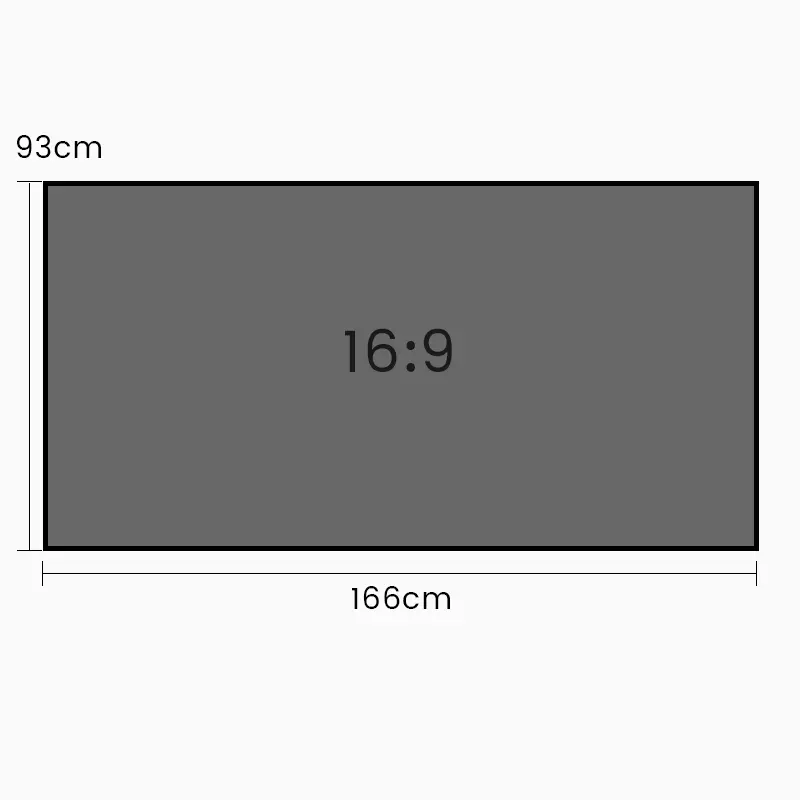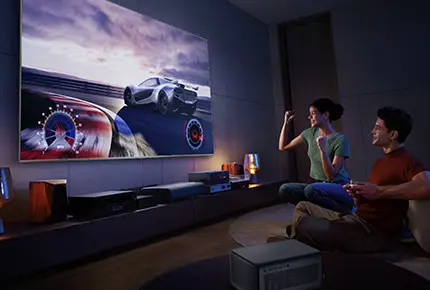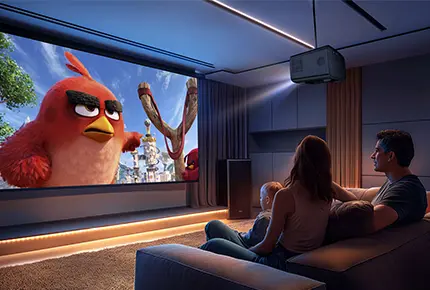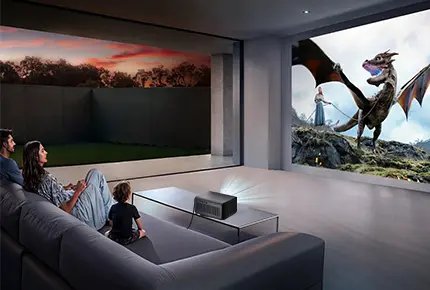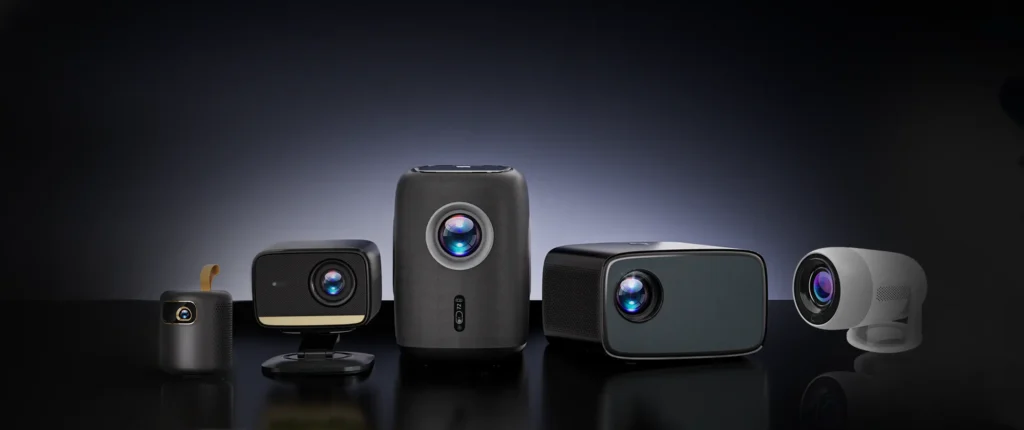
What is ALR projector screen?
An ALR (Ambient Light Rejecting) projector screen is designed to improve the quality of the image by rejecting or minimizing ambient light in a room. This type of screen helps ensure that the projector’s image remains clear, bright, and sharp, even when there is light in the room. It works by using a special coating or material that reflects only the light coming directly from the projector, while rejecting light coming from other sources (like overhead lighting or windows).
Here’s how ALR projector screen works and the core technology
The screen is engineered to reflect only the light from the projector and absorb or diffuse ambient light, which can wash out the image on a standard screen. By rejecting side or overhead light, the ALR screen enhances the contrast ratio, making dark scenes appear deeper and more vivid, even in well-lit rooms. And it’s especially useful in rooms with lots of ambient light, such as living rooms with windows or rooms with strong overhead lighting.
- The core technology lies in the screen’s optical structure: ALR screens use micro-layered optical coatings (e.g., sawtooth patterns or lenticular lenses) to direct projector light toward the viewer and scatter ambient light from other directions.
- For ultra-short-throw (UST) projectors, ALR screens often employ a “black grid” or “Fresnel” layer to reject ceiling light specifically (termed CLR, or Ceiling Light Rejecting). The ALR screentypically has a low gain (0.3–0.6), absorbing stray light rather than reflecting it broadly. This reduces hotspots and boosts contrast but narrows the optimal viewing angle (usually 160°–170°).
The Key Applications & Benefits of ALR Projector Screen
Bright Environments
Ideal for living rooms, conference rooms, or outdoor setups where controlling ambient light is challenging.
Enhanced Contrast
Maintains deep blacks and vibrant colors even under moderate lighting, outperforming standard white/grey screens.
UST Compatibility
Essential for laser TVs/short-throw projectors, as wall projections suffer severe washout without ALR screens.
Flexible Installation
Available in motorized tensioned, fixed-frame, floor-rising, or recessed ceiling designs.
The Limitations & Considerations of ALR Projector Screen
Viewing Angle
Narrower optimal viewing zone compared to standard screens; off-axis viewers may see dimmer images.
Projector Compatibility
Requires high-brightness projectors due to low screen gain.
Cost
More expensive than non-ALR screens.
Installation Constraints
Some ALR materials (e.g., rigid optical layers) cannot be rolled, limiting use in retractable screens.
Types of ALR Projector Screens
Type | Best For |
UST ALR | Laser TVs/short-throw |
Long-Throw ALR | Traditional projectors |
Acoustic Transparent | Home theaters (speakers behind screen) |
Portable/Motorized | Temporary/versatile setups |
Optimal Usage Tips
Room Setup: Pair with dark-colored walls/ceilings to minimize reflections.
Screen Size: Match to viewing distance (e.g., 100–120″ for 4–5 meters).
Maintenance: Avoid touching the optical layer; dust with soft microfiber cloth.

